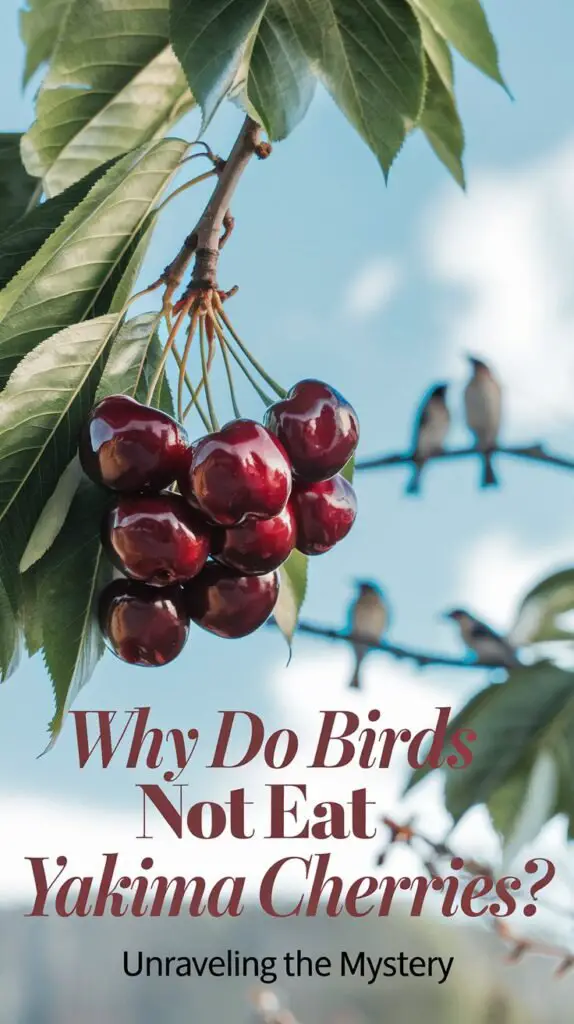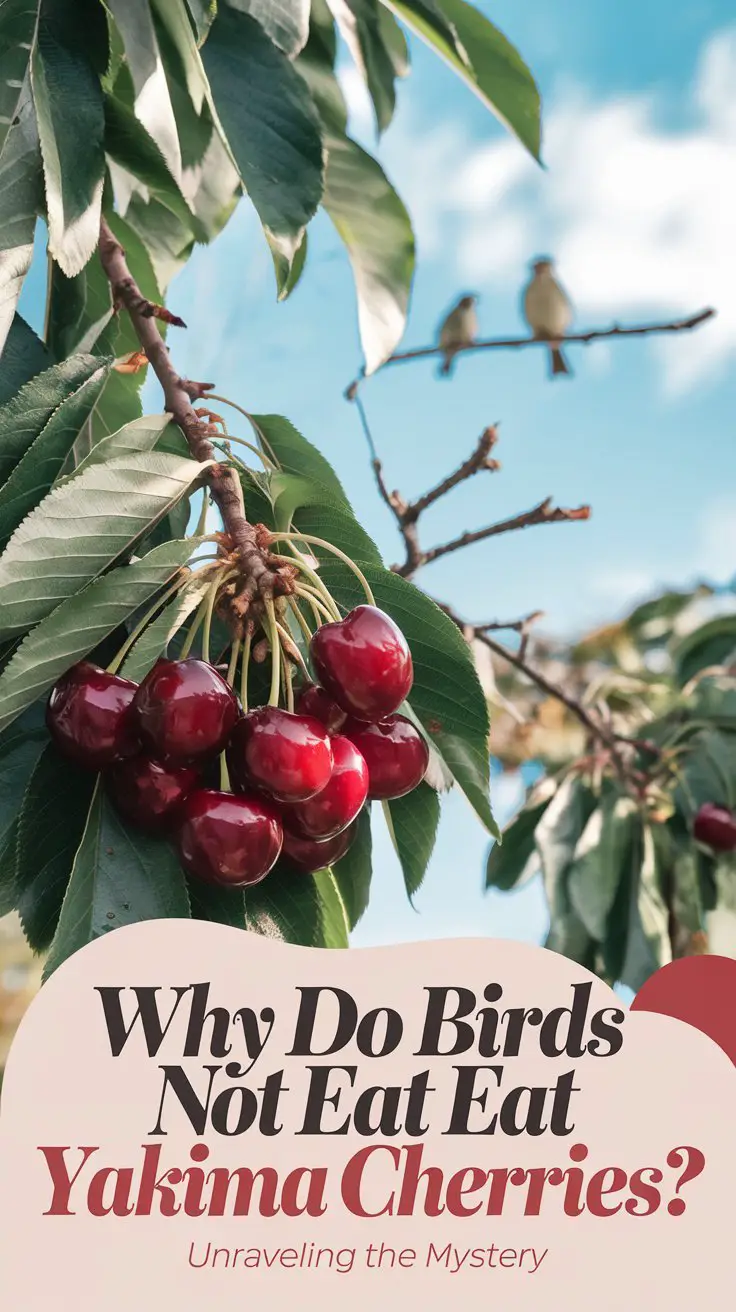Discover why birds might avoid Yakima cherries and learn effective strategies for protecting cherry crops or attracting birds to your garden. Expert insights for 2024.
Birds generally do eat Yakima cherries, but various factors can influence their feeding behavior. These factors include the availability of alternative food sources, the ripeness of the cherries, bird species present in the area, and deterrent methods used by cherry growers. Understanding these elements can help both cherry farmers protect their crops and bird enthusiasts attract a diverse range of species to their gardens.

Hello, I’m Ashley Scott, an ornithologist and agricultural consultant with over 15 years of experience studying bird behavior and crop protection. Today, we’ll explore the fascinating relationship between birds and Yakima cherries, addressing the common misconception that birds don’t eat these delicious fruits.
Understanding Yakima Cherries and Bird Behavior
Yakima cherries, named after the Yakima Valley in Washington State, are known for their sweetness and high quality. Contrary to the belief that birds avoid them, many bird species actually find these cherries quite appealing. However, several factors can influence whether birds will feed on a particular cherry crop.
Factors Affecting Bird Feeding Behavior
Alternative Food Sources
Birds are opportunistic feeders. If there are other food sources available that require less effort or provide more nutrition, they may choose these over cherries. This is especially true for insectivorous birds, which might prefer protein-rich insects over fruits.
Ripeness of Cherries
The ripeness of cherries plays a crucial role in attracting birds. Washington State University’s research suggests that birds are more likely to feed on fully ripe cherries due to their higher sugar content and softer texture.
Bird Species in the Area
Different bird species have varying dietary preferences. For instance, American Robins and Cedar Waxwings are more likely to feed on cherries compared to seed-eating birds like finches. Understanding the local bird population can help predict potential cherry consumption.
Deterrent Methods Used by Growers
Cherry growers often employ various bird deterrent methods, which can significantly reduce bird feeding on their crops. These methods may create the impression that birds are not eating the cherries.
Effective Bird Deterrent Strategies for Cherry Growers
- Visual Deterrents: Reflective tape, predator decoys, and scare balloons can be effective in keeping birds away from cherry orchards.
- Auditory Deterrents: Sonic devices that emit predator calls or distress signals can discourage birds from feeding on cherries.
- Physical Barriers: Netting is one of the most effective methods to protect cherry crops from bird damage. Oregon State University’s Extension Service provides detailed guidance on proper netting techniques.
- Chemical Repellents: Some growers use non-toxic, food-grade chemical repellents that make cherries less appetizing to birds while remaining safe for human consumption.
- Habitat Modification: Managing the surrounding landscape to reduce attractive features for birds can help minimize cherry damage.
Attracting Birds to Your Garden (For Bird Enthusiasts)
If you’re a bird lover wondering why birds aren’t eating cherries in your garden, consider these tips:
- Provide Diverse Food Sources: Offer a variety of bird-friendly plants and feeders to attract different species.
- Ensure Water Availability: A bird bath or small fountain can attract birds to your garden.
- Create Shelter: Dense shrubs and trees provide safe spaces for birds to rest and nest.
- Avoid Pesticides: Organic gardening practices can increase insect populations, attracting a wider range of bird species.
The Role of Yakima Cherries in Local Ecosystems
While cherry growers aim to protect their crops, it’s important to recognize the role of fruit trees in supporting local wildlife. Cherries can be an important food source for birds, especially during migration periods. Balancing crop protection with ecological considerations is crucial for sustainable agriculture.
Climate Change and Its Impact on Bird-Cherry Interactions
Recent studies suggest that climate change may be altering bird migration patterns and the timing of cherry ripening. This phenological mismatch could lead to changes in bird feeding behavior on cherries in the future.
Conclusion
The relationship between birds and Yakima cherries is complex and influenced by numerous factors. While birds do eat these cherries, various elements can affect their feeding behavior. For cherry growers, understanding these factors is crucial for implementing effective crop protection strategies. For bird enthusiasts, this knowledge can help create more attractive garden environments for a diverse range of bird species.
As we move forward in 2024, continued research and observation will help us better understand and manage the delicate balance between agricultural productivity and supporting local wildlife populations.
For more gardening tips and plant care guides, visit usagardenhub.com





One comment on “Why Do Birds Not Eat Yakima Cherries? Unraveling the Mystery”